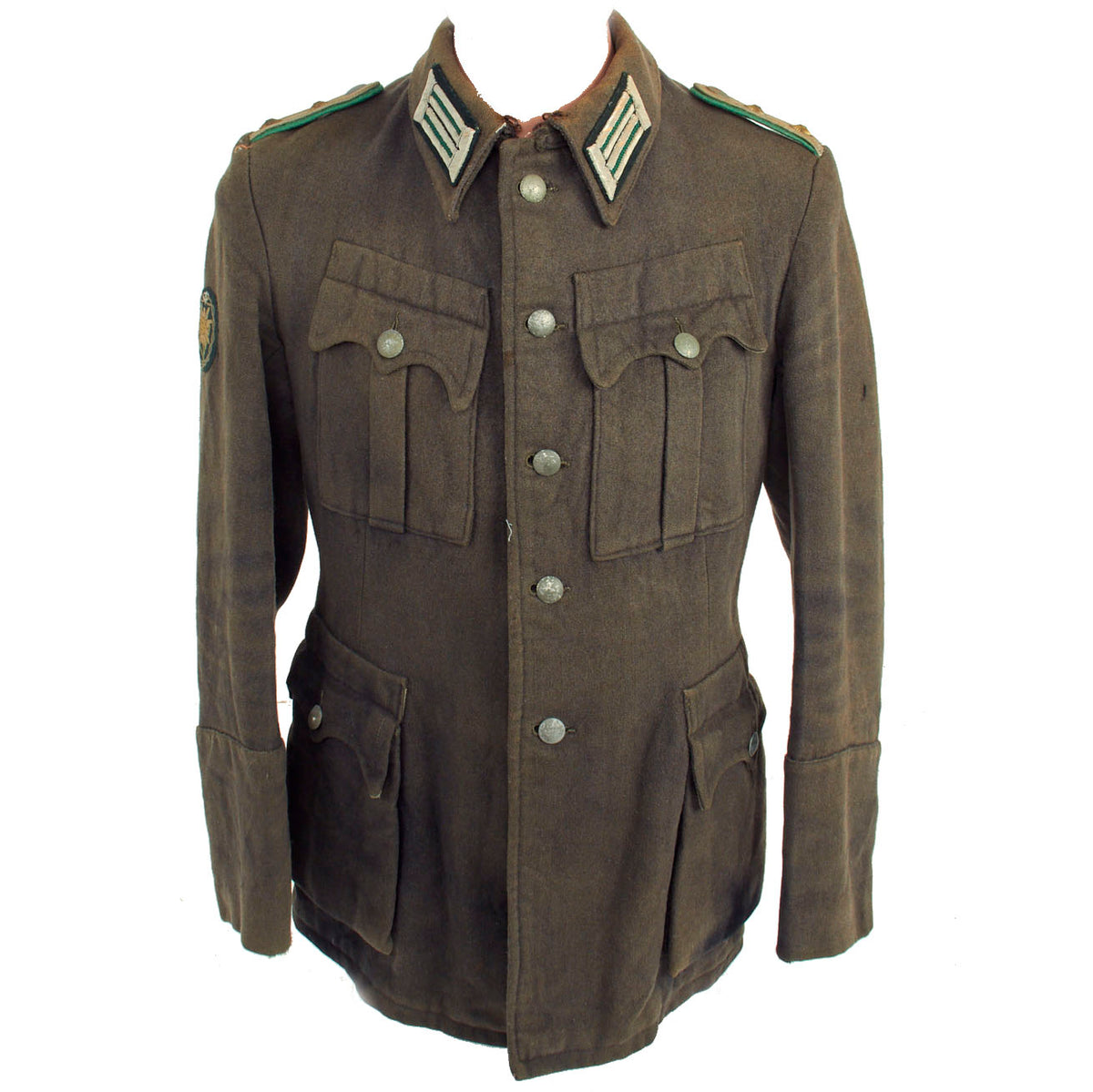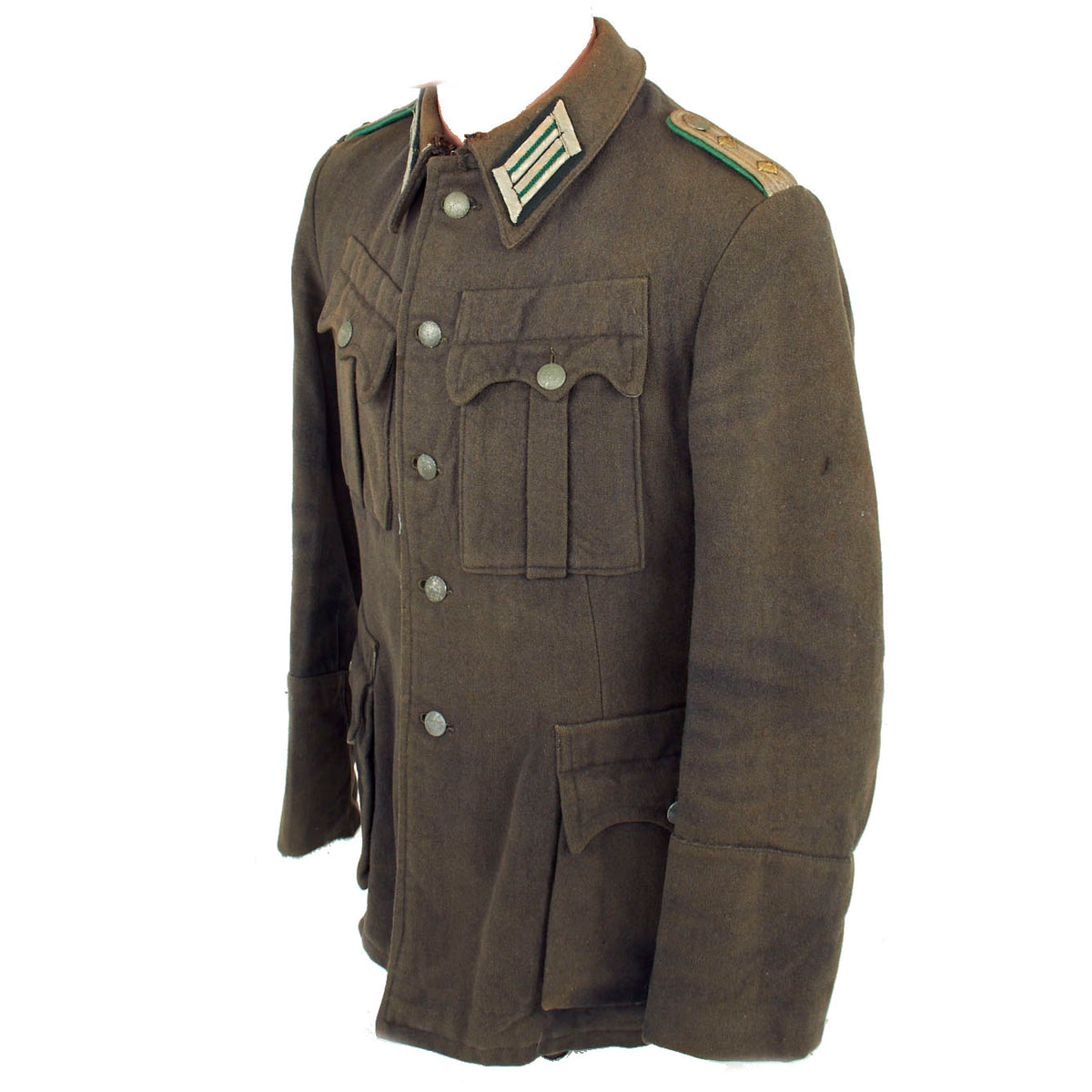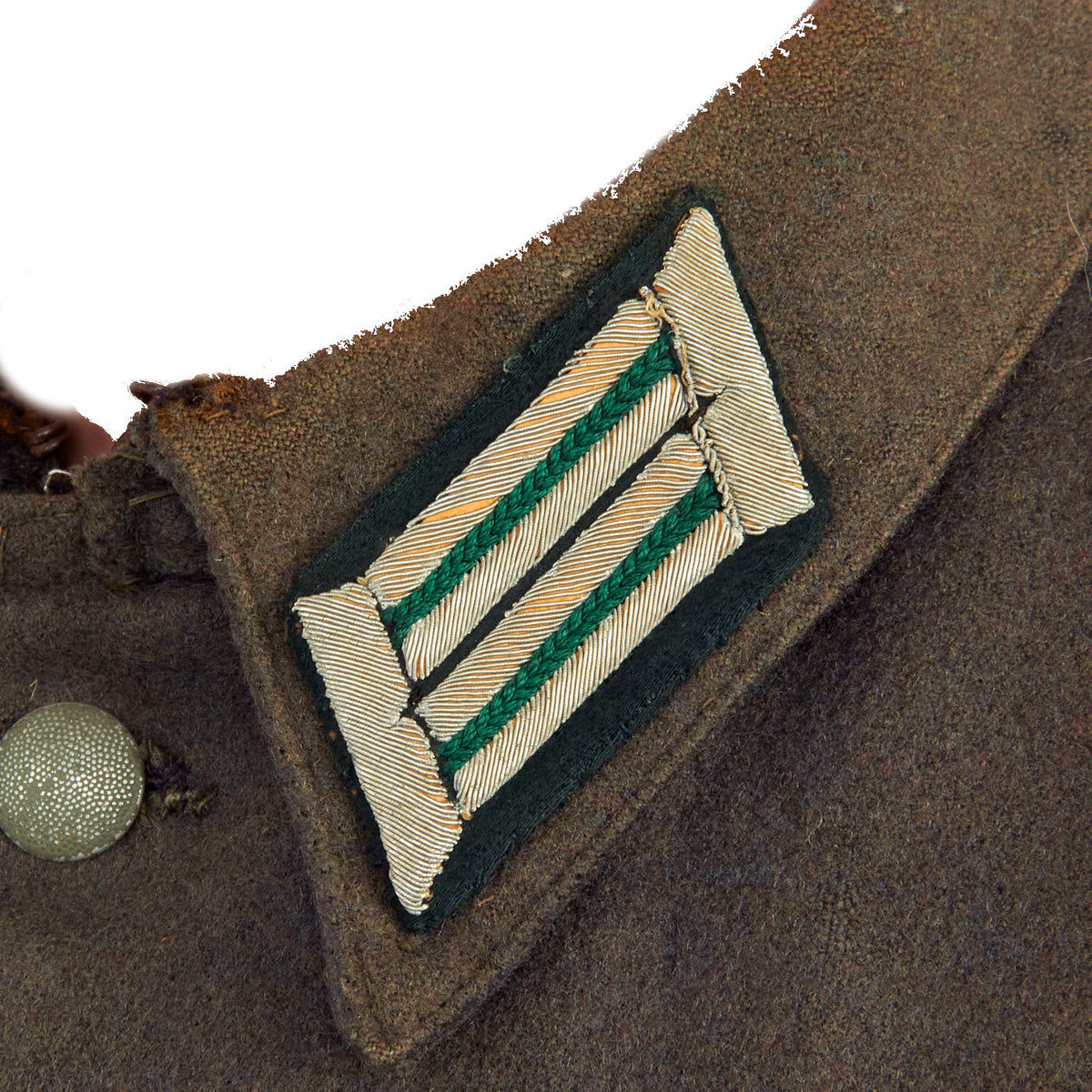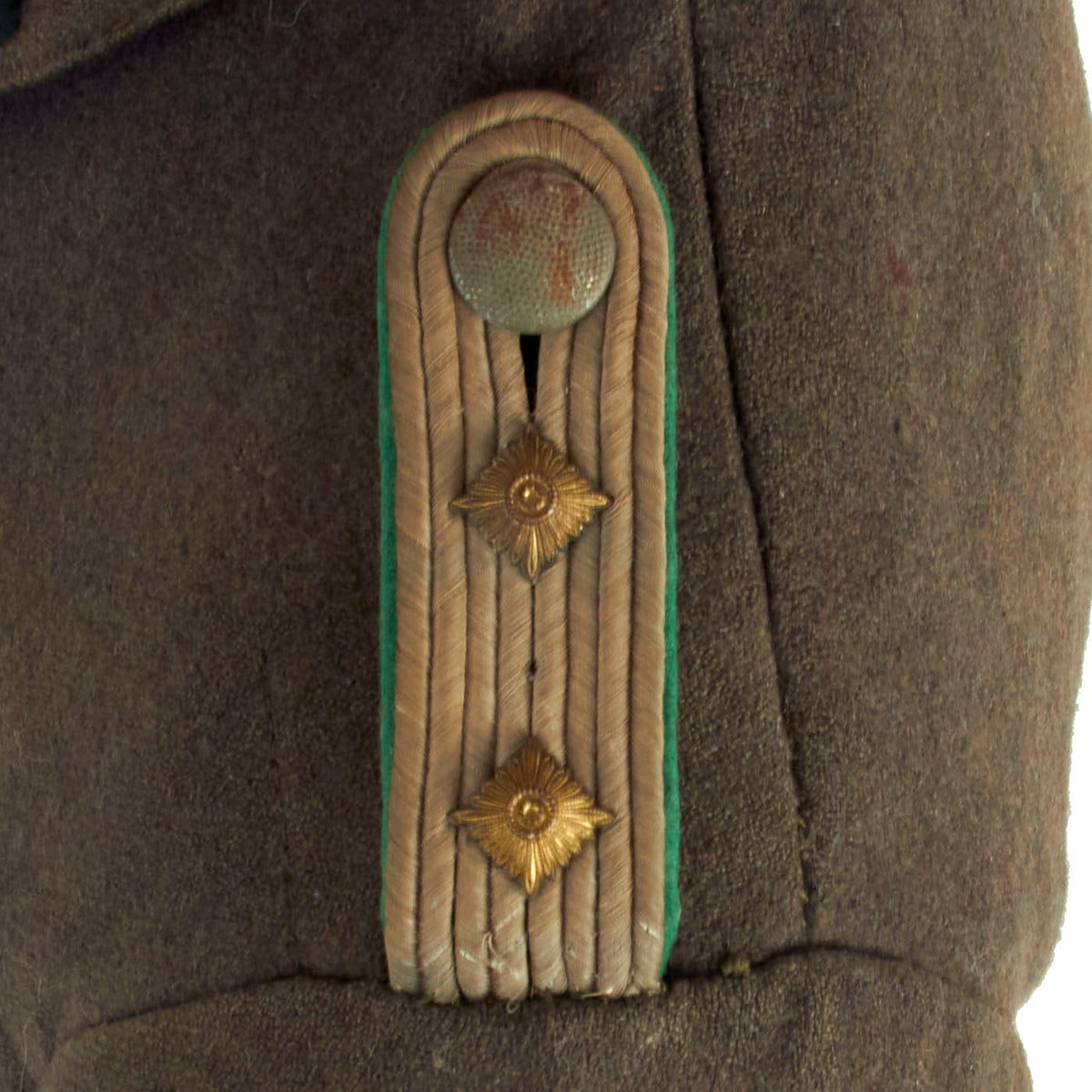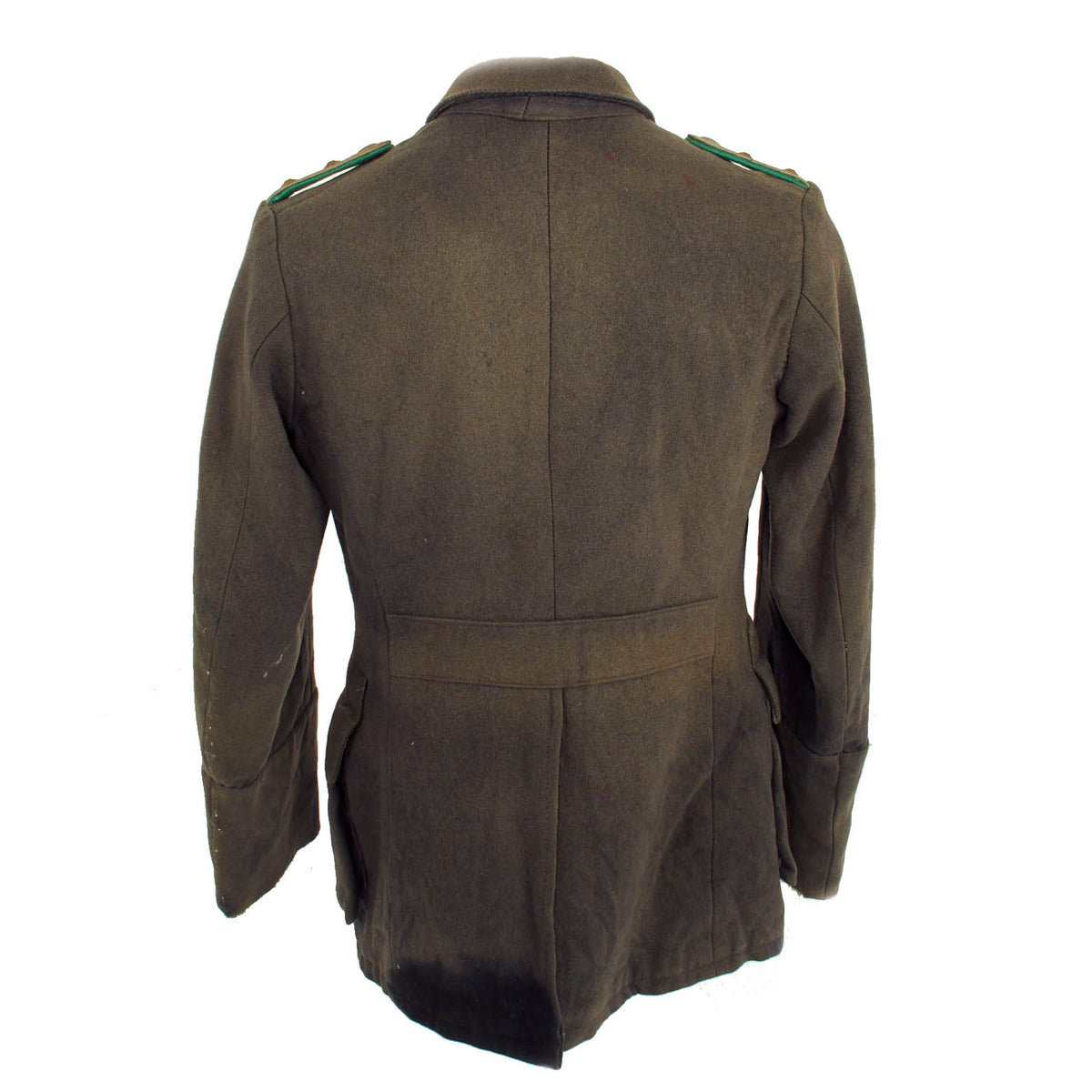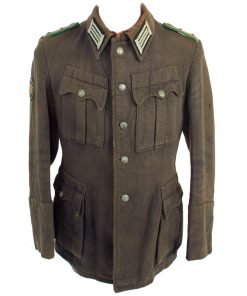Original German WWII Gebirgsjäger Mountain Trooper Hauptmann Officer’s Tunic – Pre-War Austrian Uniform Conversion Original Items
$ 1.195,00 $ 298,75
Original Item: Only One Available. This is a very nice German WWII Heer Army Gebirgsjäger Mountain Trooper Tunic, with a fantastic service worn look. The German military captured all varieties of military equipment from all over Europe; weapons, vehicles, uniforms, and equipment of all types were captured, and in turn, reissued/repurposed/reused by the German military. Following the Annexation of Austria in 1938, large stocks of Austrian Military supplies were acquired by the Wehrmacht, who in turn reissued/reused the items.
There are no maker markings inside of the tunic, and it is in the correct gray color used by the Austrian army. Acquired during the pre-war period and used by the Mountain troopers, this is a uniform tunic that definitely has some stories to tell!
The tunic features four pockets with scalloped flaps and pebbled aluminum buttons, which may have been replaced after the tunic was put into German service. The Austrian tunic does not have any area where a breast eagle could be attached, so there is not one present, and we do not see any evidence that one was removed. There is a Gebirgsjäger Alpen-Edelweiß (Mountain Noble White) machine embroidered sleeve badge on the right sleeve, which is mostly white thread except for the top, where there is the correct silver bullion for an officer.
The collar is fitted with Offiziere (Officer) litzen collar patches on each side, woven from a fine silver flatware thread on a green “badge cloth” base. The central colored stripes on each side are hellgrün (light green), the Corps Color (Waffenfarbe) for Gebirgsjäger (mountain troops), Skijäger (ski troops), and Jäger (light infantry troops). The collar and insignia show light wear from service, as to be expected on a tunic of this age.
The button secured “sew-in” style company officers schulterklappen (shoulder boards) of this tunic are constructed with two rows of fine silver flatware “Russia Braid” double piping and have the correct light green piping around the edges. Each bear two “rank” pips, which denote the rank of Hauptmann (“Head Man” or Captain).
A very nice service used example of a very early Mountain Trooper tunic with great research and display potential!
Approx. Measurements:
Collar to shoulder: 10”
Shoulder to sleeve: 25.5”
Shoulder to shoulder: 17”
Chest width: 18.5”
Waist width: 18”
Hip width: 21.5”
Front length: 30.5″
Gebirgsjäger material is among the most popular of all German WWII items. They were the light infantry part of the alpine or mountain troops (Gebirgstruppe) of Germany and Austria. The word Jäger (meaning “hunter” or “huntsman”) is a characteristic term used for light-infantry or light-infantryman in German-speaking military context.
The mountain infantry of Austria have their roots in the three Landesschützen regiments of the Austro-Hungarian Empire. The mountain infantry of Germany carry on certain traditions of the Alpenkorps (Alpine corps) of World War I. Both countries’ mountain infantry share the Edelweiß insignia. It was established in 1907 as a symbol of the Austro-Hungarian Landesschützen regiments by Emperor Franz Joseph I. These troops wore their edelweiss on the collar of their uniforms. When the Alpenkorps came to aid the Landesschützen in defending Austria-Hungary’s southern frontier against the Italian attack in May 1915, the grateful Landesschützen honored the men of the Alpenkorps by awarding them their own insignia: the edelweiss. Together with the Fallschirmjäger (Paratroopers) they are perceived as the elite infantry units of the German Army.
Fast Shipping with Professional Packaging
Thanks to our longstanding association with UPS FedEx DHL, and other major international carriers, we are able to provide a range of shipping options. Our warehouse staff is expertly trained and will wrap your products according to our exact and precise specifications. Prior to shipping, your goods will be thoroughly examined and securely secured. We ship to thousands clients each day across multiple countries. This shows how we're dedicated to be the largest retailer on the internet. Warehouses and distribution centres can be located throughout Europe as well as the USA.
Note: Orders with more than one item will be assigned a processing date depending on the item.
Before shipping before shipping, we'll conduct a thorough inspection of the items you have ordered. Today, the majority of orders will be delivered within 48 hours. The delivery time will be between 3-7 days.
Returns
The stock is dynamic and we cannot completely manage it because multiple stakeholders are involved, including our factory and warehouse. So the actual stock may alter at any time. It's possible that you may not receive your order once the order has been made.
Our policy is valid for a period of 30 days. If you don't receive the product within 30 days, we are not able to issue a refund or an exchange.
You can only return an item if it is unused and in the same state as the day you received it. You must have the item in its original packaging.
Related products
Uncategorized
Uncategorized
Australian WWII Owen MK1 Machine Carbine SMG Custom Fabricated Replica with Sling Original Items
Uncategorized
Uncategorized
Armored Burgonet Helmet & Polearm from Scottish Castle Leith Hall Circa 1700 Original Items
Uncategorized
Uncategorized
Uncategorized
Uncategorized
Uncategorized
Uncategorized
Uncategorized
Uncategorized
Uncategorized
Uncategorized
Uncategorized
Uncategorized
Uncategorized
Uncategorized
